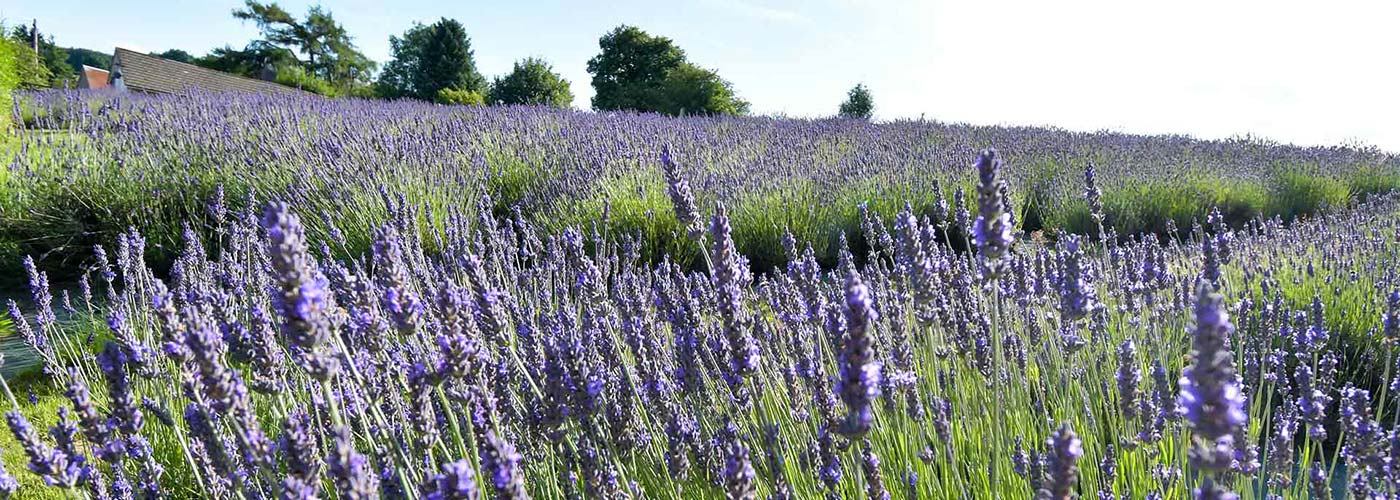
Making Lavender Oil: The Movie. Starring Morgan Price & Alice Atkins.
Filmed and directed by Bethan Travis. Music by Christian Pattemore
People often ask us how to be a lavender farmer, so here are our answers as they pertain to us at 1100 feet on a rainy windswept hillside.
Which varieties of lavender do you recommend?
For oil distillation we grow Grosso as it has the highest oil yield and is very hardy. When we distil Grosso one basket filled with 15 kilos of lavender produces anywhere from 100 to 250 ml of oil.
We also grow Imperial Gem and Folgate which make pretty dried bunches.
What sort of land do you need to grow lavender?
The earth must be well draining for lavender to succeed. Our lavender is planted on a steep hill farm which helps the water runoff. As well, lavender likes the earth to be slightly alkaline. Our earth is a little acidic so we add lime.
Does it matter which way the field faces?
There are many discussions about whether to plant facing east or west and so on. There are also debates about whether to plant in rows running east west or north south. We don’t think either of these things matter very much. The important thing is to plant where the lavender will get maximum sunshine and the best drainage.
How much lavender do I need to grow to make a living out of it?
On our 2.5 acres we produce around 10 litres of oil. That oil is the unique ingredient in most of our products. We never sell the oil on its own as it is dedicated for use in our own products. You would need many more acres of lavender to produce enough oil to make a profit selling it.
How do you plant a field of lavender and control weeds?
We begin with plugs which are cuttings taken from established plants and rooted. We prepare each lavender row for planting by using a cultivator to break up and aerate the soil. We no longer recommend weed suppressing matting. We think it holds moisture (lavender loves a drought) and prevents oxygen reaching the roots.
We plant lavenders every 18 inches along a row and use strulch (a combination of straw and mulch) to control weeds.
The rows are about five feet apart to leave room for the mower to get up and down the hillside to keep the grass tidy.
Do you use fertiliser?
No
What about winter?
Hardy plants such as ours are fine as long as the temperature doesn’t fall far below zero for more than a couple of weeks in winter. We like it when they’re covered in heavy snow as it insulates the crop.
How do you harvest your lavender?
We cut by hand with small serrated sickles to cut the decorative varieties so they are in line for making bunches.
When we cut Grosso for distillation we use serrated sickles or a Japanese tea plucker. It is like a hedge trimmer but with handles on each end. It takes two people to carry it for cutting and a third to hold the large parachute like bag into which the flowers are blown.
When do you harvest lavender?
Lavender is ready to be cut for distillation when the blooms are going over. Roughly that’s when the flowers are 1/3 closed, 1/3 open, and 1/3 over.
Lavender intended for dried bunches should be cut earlier when the blooms are not too open.
At the end of the season lavenders are cut back keeping one inch of new growth.
When do oil producing lavender plants become productive and how long do they live?
It is best to cut them back before they bloom for the first couple of years to make the plants bushier. We start distilling with them in the third year.
They live anywhere from five to twenty years.
What size still have you got?
Our still handles 15 kilos at a time.
How do you propagate lavender plants?
We take cuttings from the youngest established plants each new year and then raise them in our greenhouse until they are strong enough to plant out after the frost is over.
If you buy them from a nursery try to find one growing them in a similar climate.
CONSULTATION SERVICES
If you need a more detailed consultation we can organise a consultation on the farm. Please write to us at farmers@welshlavender.com to make an arrangement.


